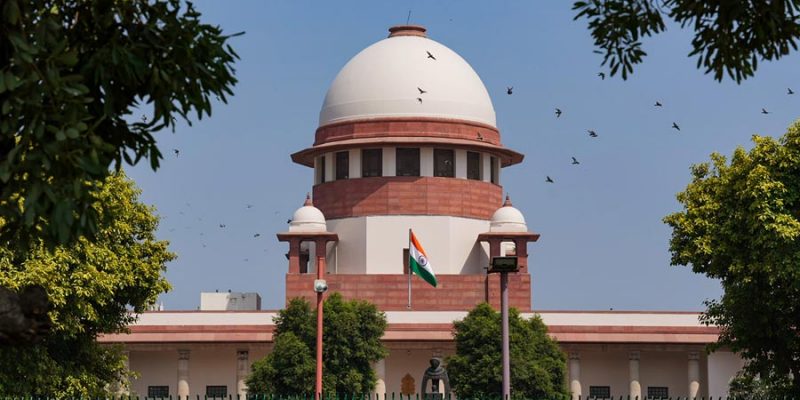Little Known About Mughal-Era ‘Mosque’ in UP Where Muslim Youth Was Booked for Offering Azaan

New Delhi: A 21-year-old Muslim man in Uttar Pradesh’s Shamli district was booked for offering azaan at a dilapidated structure with a contested character, believed by locals to date back to the Mughal era. He was arrested, and later granted bail, after being charged for allegedly creating enmity between communities.
While The Wire could not independently verify the estimated age of the structure, those concerned with the matter claimed, without any documentary evidence, that it was 250-300 years old. While local Muslims believe the structure was a mosque, some Hindus say it used to be a fort belonging to Hindu rulers before the conquest by Mughals and Afghans.
Umar Qureshi’s act of offering namaz at the site allegedly violated a British-era mutual understanding between Hindus and Muslims in the region that neither community would use the premises for religious purposes or alter its status quo, said Neeraj Kumar, the husband of the local pradhan, on whose complaint an FIR was lodged.
The structure is located in Ahata Gos Garh (alternatively spelt Ahata Gausgarh) village in Thana Bhawan block of Shamli district in western UP. On Friday, January 5, police lodged an FIR against one Umar Qureshi, a resident of Jalalabad town, 5-6 km away, for allegedly offering namaz at the site held by him to be a Mughal-era mosque. The village Ahata Gos Garh has no Muslim residents, said Kumar.
Qureshi was booked under Section 505 (2) of the Indian Penal Code (statements creating or promoting enmity, hatred or ill will between classes) and Section 67 of the Information Technology Act. According to the FIR, a copy of which is with The Wire, on Friday at around 2 pm, Qureshi allegedly offered namaz at the site and “with the intention of spoiling mutual harmony in the society” clicked a video and photos of the act and shared it on his Facebook and Instagram pages. He allegedly made them viral on social media.
Apparently, this was not the first time he prayed at the site. A page matching Qureshi’s identity on Instagram, with over 44,000 followers, shows that his last dozen-odd posts were dedicated to the ‘mosque’ and appealing to people to widely share information about the poor condition of the structure. A video from December 29 (also a Friday) uploaded by him on his page showed him, barefoot, offering the azan while facing the structure. Large piles of cow dung had been spread out to dry at the foot of the unutilised structure as well as in the compound facing it.
In his written complaint, Kumar described the site as a 200- to 300-year-old khandhar (ruins) of a quila (fort) near his village. Namaz had never been offered at the site before this, he said, adding that Qureshi’s act had created outrage among the villagers.
Kumar told The Wire that in the past, too, locals from neighbouring villages and towns had visited the site out of curiosity and returned without any controversy. “People come here to see the site. We have no objection to it. But in this particular case, those who came here raised unnecessary slogans and gave statements to incite people and offered namaz as well,” said Kumar.
Kumar says some locals refer to the structure as Raja ka Quila but he does not know what to call it – a mosque or a fort – and admits he doesn’t know for sure what its historicity was. However, what Kumar is certain about is that the structure must not be tampered with. “Our bade log (ancestors) had reached a mutual understanding that no Hindu would offer puja here and no Muslim would offer namaz here. That’s it,” said Kumar, stressing that he wanted to avoid a communal controversy over the issue.
Anees Ahmad, Qureshi’s father, said his son cleaned parts of the ‘mosque’ out of enthusiasm and landed into trouble over the azan as he shot videos of the act.
“This is the age of videos. So, it was widely circulated,” said Ahmad, downplaying the incident. He said his son was back home after being released on bail but rejected The Wire’s request to speak to him.
Anees said his son assisted him in his a fabric store business.
Little is known about the actual history of the site. The official district Gazetteer of Muzaffarnagar, of which Shamli was a part of till 2012, published in 1980, and the much older edition of 1903 authored by British officer H.R. Nevill, do refer to a fort in Ghausgarh occupied by Zabita Khan, the son of Afghan chieftain Najib-ud-Daula, dating back to 1785.
However, one cannot readily verify if it was the same structure in question today or what stood before it.
Bhanu Pratap Singh, a professor in civil engineering in SRM University, Ghaziabad and secretary of a lesser-known group Manahar Kheda Durg Kalyan Samiti, claimed the Gos Garh structure was part of a Hindu kingdom Manahar Kheda in present-day Jalalabad. It was taken over by the Mughals during the era of Aurangzeb, he claimed, adding that Gos Garh village was within the territories of Manahar Kheda.
Singh further says, though without accessible documentary evidence, that during the British era a dispute arose between the Hindus and Muslims here over the identity of the structure and about offering prayers. Then in 1940, a decision was made at a joint panchayat that Hindus would not damage the structure while Muslims will not pray there, said Singh, who has visited the village.
The fact that most of the façade of the structure still exists today was testament to the local people keeping their promise of not destroying it, he added.
Singh said he had written to the Archaeological Survey of India on several occasions requesting them to take over the structure and preserve it for its historical value. He is concerned that if left to linger in its present state, the structure could become a point of a new dispute between Hindus and Muslims.
“This can become a big issue in the future.”
In 2013, the districts of Muzaffarnagar and Shamli witnessed large-scale communal violence which led to the death of at least 60 persons and the displacement of thousands of others.
Last year in March, the region had sprung into the news cycle after the Manahar Kheda Durg Kalyan Samiti submitted a petition to the district administration of Shamli, addressed to chief minister Adityanath, demanding that the fort of Jalalabad be renamed as the Manahar Kheda fort and be handed over to the ASI. The Samiti claimed that the Jalalabad Fort had been usurped by Jalal Khan, an Afghan Mughal commander, after poisoning a Rajput Hindu king of the 17th century.
The fort is presently occupied by the Arshad Ali Khan, the sitting Rashtriya Lok Dal MLA from Thana Bhawan, and a descendant of Jalal Khan. Many generations of Jalal Khan’s descendents have lived there. Khan says he has official documents to prove their right over the land.
Regarding the structure in Gos Garh, Khan says that because the village ceased to have a Muslim population, over time the ‘mosque’ turned desolate. Till 20-25 years back, people from Jalalabad would even go there to offer ceremonial namaaz and tarawi once in a while, he said. “It is 100% a mosque,” said Khan, though adding that he would provide the documentary references later.
In a detailed piece written last year titled ‘Hindutva eyes a Muslim fort in UP’, senior journalist Ajaz Ashraf documented the history of the Jalalabad Fort amidst demands to rename it. Ashraf linked the demand to rename Jalalabad Fort to current-day politics: “With the 2024 Lok Sabha elections a year away, the targeting of the Jalalabad fort is an outcome of Hindutva perennially inventing national, regional and micro-level symbols to widen the Hindu-Muslim chasm. Jalalabad is arguably the first instance of Hindutva coveting a Muslim-owned property.”
Superintendent of Police Shamli Abhishek said that historically, no religious function was found to be been held at the decrepit structure, which may “possibly have been a fort”.
“Clear instructions have been sent that if someone tries to start a new practice going against convention and tries to spoil the law and order, tough action will be taken against them,” he said in a video statement.
There was regular movement of the police in the village to prevent any law and order situation, the officer added.
The SP also asked the concerned parties in the matter to approach the civil court or revenue department for any sort of relief regarding the dilapidated structure.







